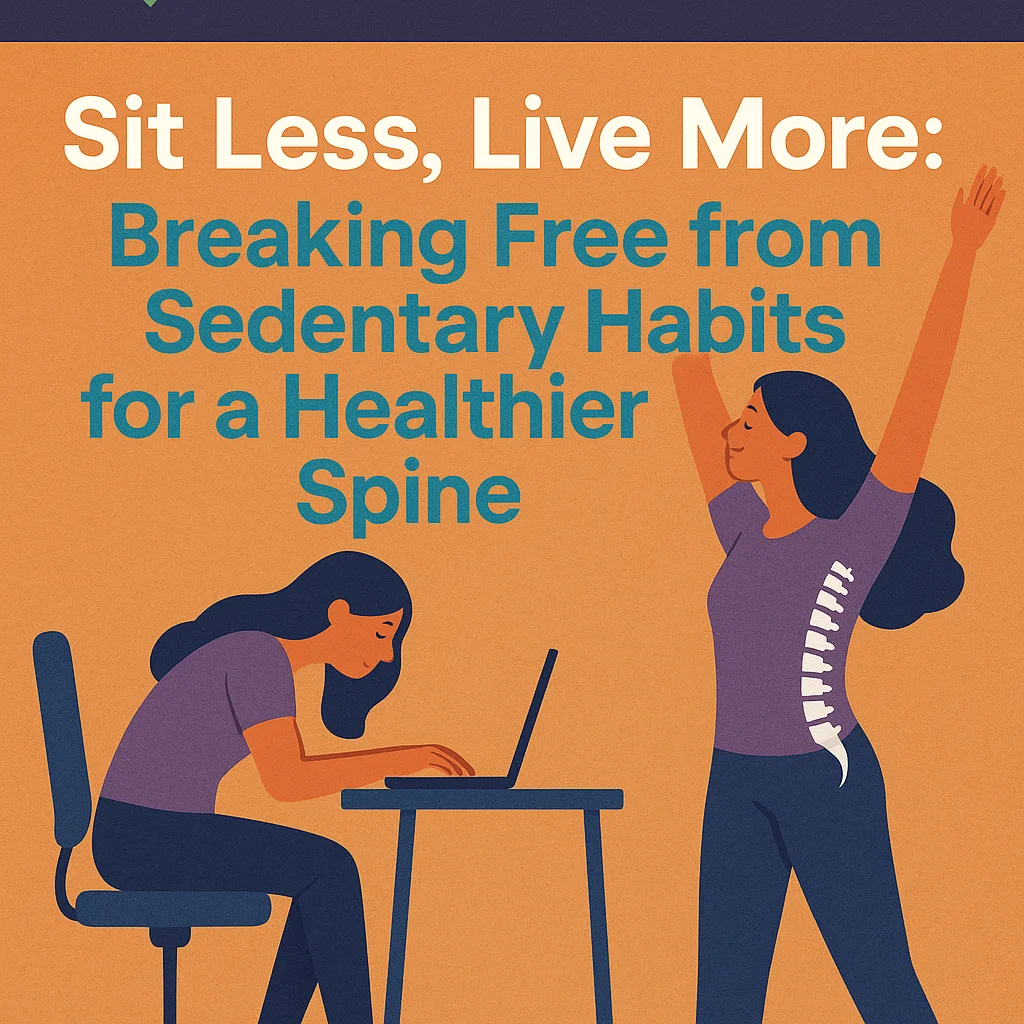Acupuncture from a Chiropractic Perspective: Enhancing Health Naturally

Acupuncture is an ancient healing practice with deep roots in Traditional Chinese Medicine (TCM), but its benefits are increasingly recognized in modern healthcare, including chiropractic care. As chiropractors, we focus on optimizing musculoskeletal function, nervous system health, and overall well-being—goals that align well with the principles of acupuncture. By incorporating acupuncture into chiropractic treatment, we can help patients achieve pain relief, improved mobility, and enhanced overall health. Acupuncture and the Nervous System One of the primary ways acupuncture benefits the body is by positively influencing the nervous system. Research suggests that acupuncture stimulates the release of neurotransmitters, such as endorphins and serotonin, which help modulate pain and mood. Additionally, acupuncture has been found to affect the autonomic nervous system, helping to balance sympathetic (fight-or-flight) and parasympathetic (rest-and-digest) responses, promoting relaxation and recovery. This is particularly relevant for patients experiencing chronic stress, pain, or nervous system dysregulation. Decreasing Inflammation Inflammation is a key contributor to many musculoskeletal conditions. Acupuncture has been shown to modulate inflammatory responses by influencing cytokine production and promoting the release of anti-inflammatory chemicals. This makes acupuncture an excellent complementary therapy for conditions such as osteoarthritis, tendinitis, and chronic lower back pain, where reducing inflammation can lead to significant pain relief and improved mobility. Reducing Muscle Tension Muscle tension and trigger points can cause significant discomfort and limit movement. Acupuncture works by stimulating the nervous system and increasing blood flow to affected areas, which can help relax tight muscles and relieve pain. Studies indicate that acupuncture can decrease muscle tension and improve function by affecting neuromuscular pathways and reducing excessive nerve firing. This makes it a valuable tool in chiropractic care for addressing conditions such as myofascial pain syndrome, tension headaches, and postural imbalances. Supporting Holistic Healing and Recovery Acupuncture does more than just address pain—it supports the body’s natural healing processes. It can enhance circulation, improve sleep quality, and boost immune function, all of which contribute to overall health and well-being. Many patients report feeling an overall sense of balance and relaxation after treatment, which can further aid in recovery from injuries and chronic conditions. Integrating Acupuncture into Chiropractic Care By incorporating acupuncture into chiropractic treatments, we can take a more comprehensive approach to patient care. Whether used to complement spinal adjustments, soft tissue therapy, or rehabilitation exercises, acupuncture enhances treatment outcomes by addressing pain, inflammation, and nervous system imbalances. This integrative approach helps patients achieve long-term relief and better functional health. acupuncture can enhance your chiropractic care, schedule a consultation to explore its benefits firsthand! Acupuncture is a powerful, evidence-based therapy that aligns well with chiropractic principles. If you’re interested in learning how acupuncture can enhance your chiropractic care, schedule a consultation to explore its benefits firsthand!
Top 5 Myths About Chiropractic Treatment – Debunked!

Chiropractic care has become a trusted part of healthcare, but myths persist. Let’s take a closer look at the most common misconceptions: 1. Myth: Chiropractors Aren’t Real Doctors Fact: Chiropractors are regulated in all 10 Canadian provinces and are designated to use the title “doctor” after completing the extensive Doctor of Chiropractic degree program. Chiropractors undergo extensive education, including a 4-year Doctor of Chiropractic (DC) degree. They study anatomy, physiology, neurology, biomechanics, and hands-on clinical training. Chiropractors are licensed healthcare professionals qualified to diagnose and treat a variety of conditions. 2. Myth: Chiropractic Care Isn’t Safe Fact: Chiropractic care is widely recognized as a safe, non-invasive treatment option. Adverse effects are infrequent. Chiropractors use precise techniques tailored to each patient, minimizing any risk and prioritizing patient comfort and safety. 3. Myth: Adjustments Are Painful Fact: In general, adjustments or joint manipulations are not painful. Many patients experience relief during or immediately after an adjustment. The cracking sound often associated with adjustments is simply gas releasing from joints, not bones cracking. While some may feel mild soreness, it’s comparable to post-workout stiffness and typically resolves quickly. 4. Myth: You’ll Be Stuck in Ongoing Care Fact: Chiropractic care plans are customized. Depending on the patient and the condition, the recommended course of care may vary. Ultimately, the decision to continue care is yours. Some patients seek long-term care for wellness or injury prevention, while others visit only as needed. Chiropractors aim to empower patients, not make them dependent. 5. Myth: Chiropractors Only Treat Back Pain Fact: While back pain is a common reason to visit, chiropractors address a range of issues, including neck pain, headaches, extremity complaints, and injuries. They can also help improve overall wellness, fitness, nutrition, and lifestyle. Why Chiropractic Care? Chiropractic treatment is a safe, effective, and evidence-based approach to improving your overall health, managing pain, and enhancing your quality of life. It goes beyond simply addressing symptoms by targeting the root causes of musculoskeletal issues. Whether you’re dealing with chronic back pain, recovering from a sports injury, or seeking preventative care to maintain optimal function, chiropractic care offers personalized solutions tailored to your unique needs. Don’t let myths or misunderstandings hold you back from exploring its many benefits. By taking a proactive approach to your health, you can experience improved mobility, reduced pain, and a renewed sense of well-being. Invest in your health today—your body will thank you tomorrow!
Sit Less, Live More: Breaking Free from Sedentary Habits for a Healthier Spine

Chiropractic Care Your sedentary lifestyle may be affecting your health more than you think. Prolonged sitting or inactivity can have wide-ranging negative impacts on the human body, including increased risks of all-cause mortality, cardiovascular disease, cancer, diabetes, osteoporosis, and depression. A sedentary lifestyle refers to a routine with little to no exercise and excessive sitting or lying down. This may sound extreme, but even working at a desk for 8 hours a day falls into this category. On average, Canadian adults spend 9.6 hours a day being sedentary, and only about 50% meet national physical activity guidelines. Current physical activity guidelines recommend at least 150 minutes of moderate to vigorous-intensity aerobic exercise per week, with the addition of strength training exercises at least twice a week. Moderate to vigorous-intensity exercise includes activities that make you sweat and breathe harder. Engaging in at least 150 minutes of activity per week can reduce the risk of premature death, heart disease, stroke, high blood pressure, certain cancers, type 2 diabetes, osteoporosis, and obesity. Tips for Getting and Staying Active: Start gradually: ease into a routine to avoid feeling overwhelmed. Incorporate activity into daily life: walk to run errands, bike to work, get off the bus a stop or two early, or take the stairs at work or in your apartment. Choose activities you enjoy: doing something you like makes it feel less like a chore. Get friends and family involved: including loved ones in your routine can make it more fun and engaging. Join a group: scheduled workout clubs or fitness groups add accountability. Stick with it: after 2-3 months, being active will start to feel like a natural part of your routine. Visit Your Chiropractor If you’re experiencing discomfort from a sedentary lifestyle, your chiropractor can help you get back on track. Chiropractic care not only focuses on spinal health but also improves mobility and overall well-being, allowing you to stay active and healthy. By combining chiropractic care with regular physical activity, you can reduce the risk of long-term health problems associated with inactivity. There are many resources to help you kickstart a healthier and more active lifestyle: ParticipACTION Heart and Stroke Foundation – Get Active American Heart Association – Easy Ways to Move More National Heart, Lung, and Blood Institute – Getting Active Resources: https://www.heartandstroke.ca/-/media/pdf-files/healthy-living/csep_guidelines_handbook.pdf?rev=-1 https://www.participaction.com/the-science/key-facts-and-stats/ https://www.ncbi.nlm.nih.gov/pmc/articles/PMC7700832/
Headache Relief: How Chiropractic Care Can Help

Headaches can significantly impact an individual’s quality of life but are often under-diagnosed and under treated. Chiropractors are highly educated and trained individuals who can diagnose, manage, and treat various types of headaches. Types of Headaches Tension type headaches – These headaches are typically a result of muscular contractions, often triggered by stress, depression, anxiety, or head injury. Symptoms include a dull, non-pulsatile, bilateral pressure sensation that commonly wraps around the head in a band-like pattern. Migraine headaches – Migraine headaches typically cause pain on one side of the head and are often accompanied by nausea, vomiting, and sensitivity to light or sound. They may also involve a migraine aura, which includes visual or sensory symptoms that occur before the headache. Cervicogenic headaches – These headaches originate from structures and tissues in the neck. They are often unilateral (one-sided) and aggravated by neck movements or certain positions. Cervicogenic headaches are a common cause of chronic headaches and are often misdiagnosed. Chiropractic Care and Headaches Chiropractors can assess, diagnose, and treat headaches using evidence-based practices. Chiropractic care is recognized as a safe and effective treatment for tension-type, migraine, and cervicogenic headaches, helping to reduce symptoms, intensity, and frequency. In cases where further intervention is required, chiropractors can refer patients to the appropriate healthcare professionals. Treatment options include 1. Manual therapy 2. Soft tissue therapy 3. Modalities including acupuncture and electrical stimulation 4. Rehabilitative exercise 5. Lifestyle changes and education 6. Referral to other practitioners Taking control of your headaches with chiropractic care is a proactive step toward improving your quality of life. By addressing the root cause of your pain, chiropractors can help you find long-lasting relief, reduce your dependency on medication, and empower you with lifestyle changes that prevent future headaches. If you or someone you know is suffering from chronic headaches, consider visiting your local chiropractor for a thorough assessment and treatment plan tailored to your needs. Resources https://chiropractic.ca/6-ways-chiropractic-care-can-help-manage-headaches/ https://bestpractice.bmj.com/
Understanding Hidden Pain: The Role of Chiropractic Care

Chiropactic Care Have you experienced a nagging pain that seems to have come out of nowhere? Where you can’t pinpoint a specific event that triggered your symptoms, but somehow they are suddenly there? We now understand that this type of pain may not have actually “come out of nowhere.” It can result from underlying factors building up over days, weeks, months, or even years! It’s common for pain and conditions to develop gradually. Sometimes the trigger is obvious—like tripping and spraining your ankle or getting whiplash in a car accident. Other times, the onset of pain is more subtle. Conditions can creep up on you, often without your awareness, until one day you wake up in pain or a minor incident causes everything to the forefront. Many factors contribute to the slow development of painful conditions, including poor sleep hygiene, bad posture, repetitive movements, a sedentary desk job, psychological stress, poor diet —the list goes on and on. These subtle changes can go unnoticed until the “last straw breaks the camel’s back”, leading to a painful and stressful state. These underlying stressors can significantly impact the spine and nervous system. Over time, this can result in dysfunction of the muscles surrounding the spine, leading to impaired spinal mechanics and disrupted communication throughout the nervous system. By the time pain arises your body may have been experiencing these dysfunctions for quite some time. Pain is often the final alarm bell of the body, signaling an underlying issue that needs attention. While it may be the first thing to go away with treatment, understanding and addressing the root cause is key to long-term relief and prevention. Regular chiropractic adjustments can not only alleviate existing pain but also help prevent future issues by promoting optimal spinal health. By improving posture, reducing tension, and encouraging better movement patterns, chiropractic care can be an essential part of maintaining your overall well-being. If you’re dealing with unexplained pain, consider reaching out to a chiropractor. They can help you uncover the underlying factors contributing to your discomfort and develop a personalized plan for recovery and prevention.
